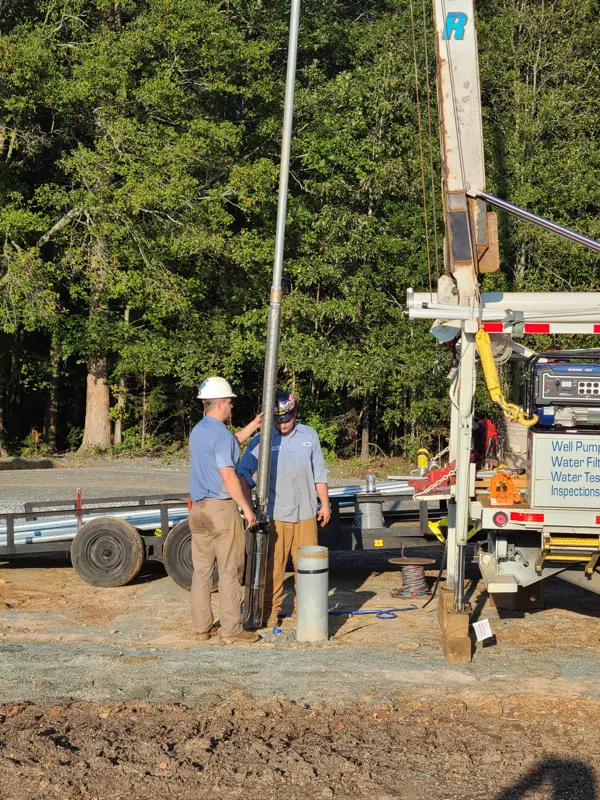The method known as hydrofracturing, also spelled hydrofracking, has the potential to increase the amount of water that is drawn from a well. It is typically utilized for wells that provide a poor output. There are numerous cases of hydrofracturing leading to an increase in yield for residential property owners.
The procedure can be carried out at the same time as the construction of a new well, or it can be performed at any time on an existing well that produces a yield that is either low or falling. It is appropriate for use only with wells that get their water from water that is migrating via fractures and fissures in the bedrock.
The method entails pumping water at a high pressure through the drilled well and into the rock formations that surround the target area. The use of hydrofracturing has the potential to enlarge existing cracks in the bedrock and extend them farther into the formation, hence increasing the number of water-bearing fractures and fissures that feed water to the well.
Hydrofracturing was initially created to boost the production of oil and gas wells, but it has since been embraced as a technology by the industry that deals with water wells. In the majority of states, hydrofracturing work can only be performed by a water well contractor who possesses a valid license or registration.
How Does It Work?
In order to complete the procedure, one or two inflatable hard rubber “sleeves” or “balloons” will be lowered down the well (packers as they are more correctly called). To begin, it is necessary to take out the pump, as well as any and all pipes and cables that are in the well.
After that, the packers are inflated such that they may completely block off a piece of the well. Packers are typically installed at a depth of at least 20 feet below the end of the casing and at least 60 feet below the surface of the earth. High pressure water is injected into the portion of the well between the packers, or below the packer if there is just one utilized.
The majority of hydrofracturing equipment designed for use with private wells is capable of producing pressures ranging from 500 to 2000 psi, and in some cases up to 3,000 psi (pounds per square inch). Adding water into the well at a pumping pace of up to fifty gallons per minute is typically sufficient for most situations. Certain states have enacted restrictions that are particularly pertinent to the hydrofracturing process.
As a result of the surrounding rocks obstructing the flow of water away from the well, the water pressure inside the area of the well that has been shut off will increase. A sudden drop in pressure, which indicates that the rocks around the fracture are taking in water, is one of the indicators that hydrofracturing has been successful.
When pumping into the well is stopped, there is typically a considerable backflow of turbid water if more fissures have been opened than were previously present.
However, if there is no significant reduction in pressure during the hydrofracturing process and the pressure in the well grows to the maximum operating pressure of the equipment, then the hydrofracturing technique may not have been successful.
When compared to the expense of utilizing a double packer system, the price of hydrofracturing that utilizes a single packer is typically lower. When using a double system, one or both of the packers can be inflated to apply pressure to a predetermined section of the well. The packers are often positioned towards the bottom of the well at first, and then they are shifted to a different portion of the well.
The information on the well drillers log or the results of a down-hole camera scan can be used to help select the zones that will be subjected to pressurization. Although it is not very common, certain contractors may employ proppants, which are small beads or grains of sand, to keep fractures and crevices in the rock open by “propping” them open.
What Are The Benefits Of Hydrofracking?
The most obvious benefit of hydrofracturing is the influx of new water sources. By enlarging existing fissures in the bedrock, a more extensive network of natural water-bearing fractures can be created and this will significantly improve the performance of many private wells.
The ability to access greater amounts of groundwater at deeper depths provides an excellent means for obtaining water that has not been contaminated by surface runoff or other contaminants found near the earth’s surface.
Another advantage associated with hydrofracturing is that it can potentially increase the production rate of certain shallow or slow-yielding wells. In addition, it may be possible to reduce pumping costs for some wells if hydrofracturing is used to create wider channels that allow for better flow of the groundwater.
Finally, hydrofracturing can help to protect certain water sources from contamination as it increases the distance between shallow aquifers and deeper layers of bedrock. This prevents pollutants from easily entering these deeper aquifers, which helps to maintain high-quality drinking water for private well owners.
Additionally, the increased size of fissures created by hydrofracturing can help to ensure a more efficient flow of water, enabling wells to produce higher yields throughout their life span.
With all this said, not all geological formations are suitable for hydrofracturing due to the nature of different soils and rocks in an area. Also, if there is a risk that fractures may intersect with natural gas or oil deposits, then this process cannot be used, as it could potentially create a hazardous situation.
Hydrofracturing is heavily regulated by government agencies in some areas and there are strict rules that must be followed before it can be done legally. All of these factors will ultimately determine whether or not hydrofracturing is an appropriate solution for any particular well.
Ultimately, hydrofracturing can be a useful and cost-effective way to improve the performance of many wells, but it is important to make sure that it is done properly and professionally. The safety of the public should always be taken into consideration when performing this type of work.
With the potential for benefits such as improved water yields and greater distances between aquifers and contaminants, hydrofracturing can be an effective way to improve many private wells.
Well Doctor LLC are the professionals that you should call on to if you have any questions or concerns about hydrofracturing. We have the experience and expertise to help you make sure that your well is properly evaluated and treated in order to maximize its performance.
Contact us today for more information on how we can help ensure a successful hydrofracturing project.

